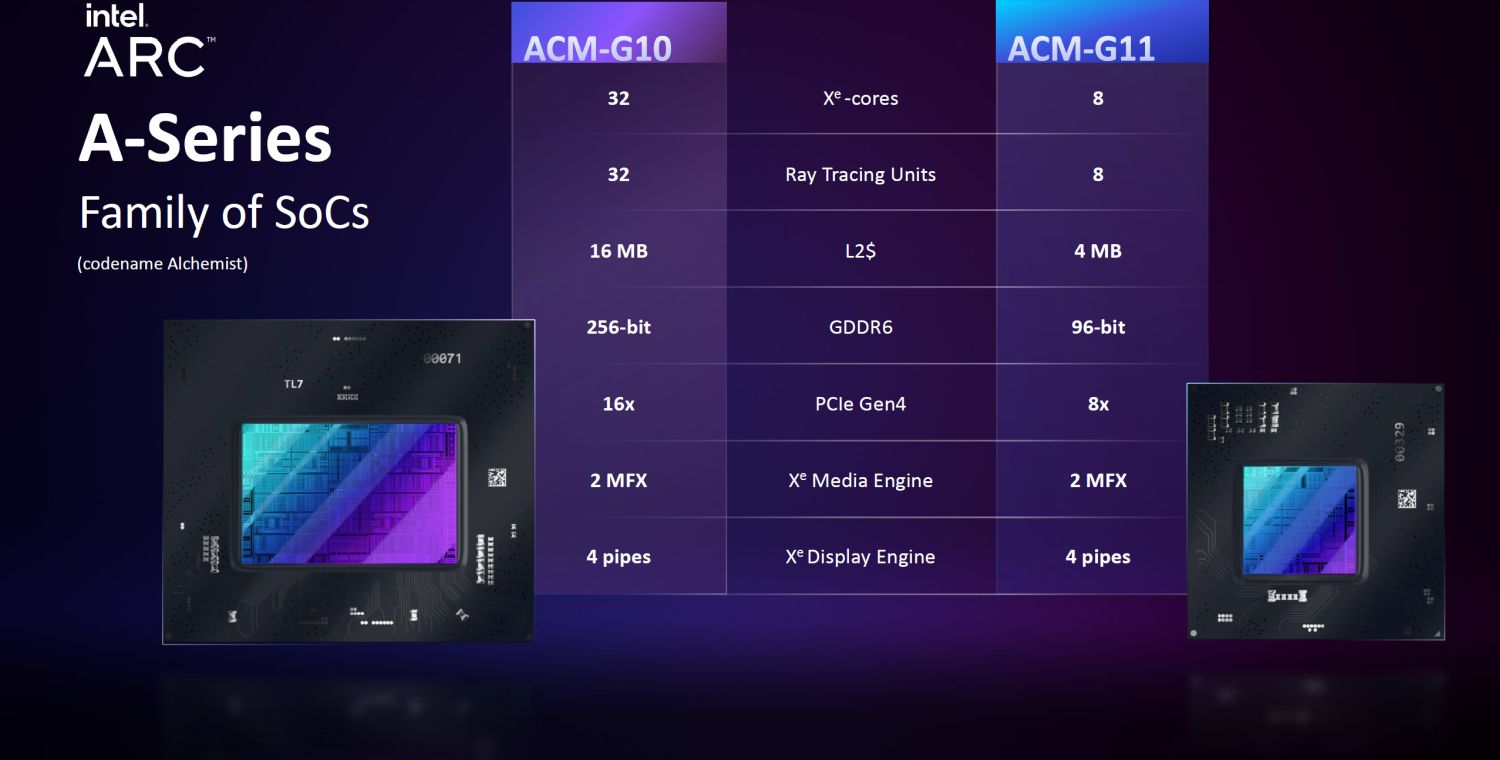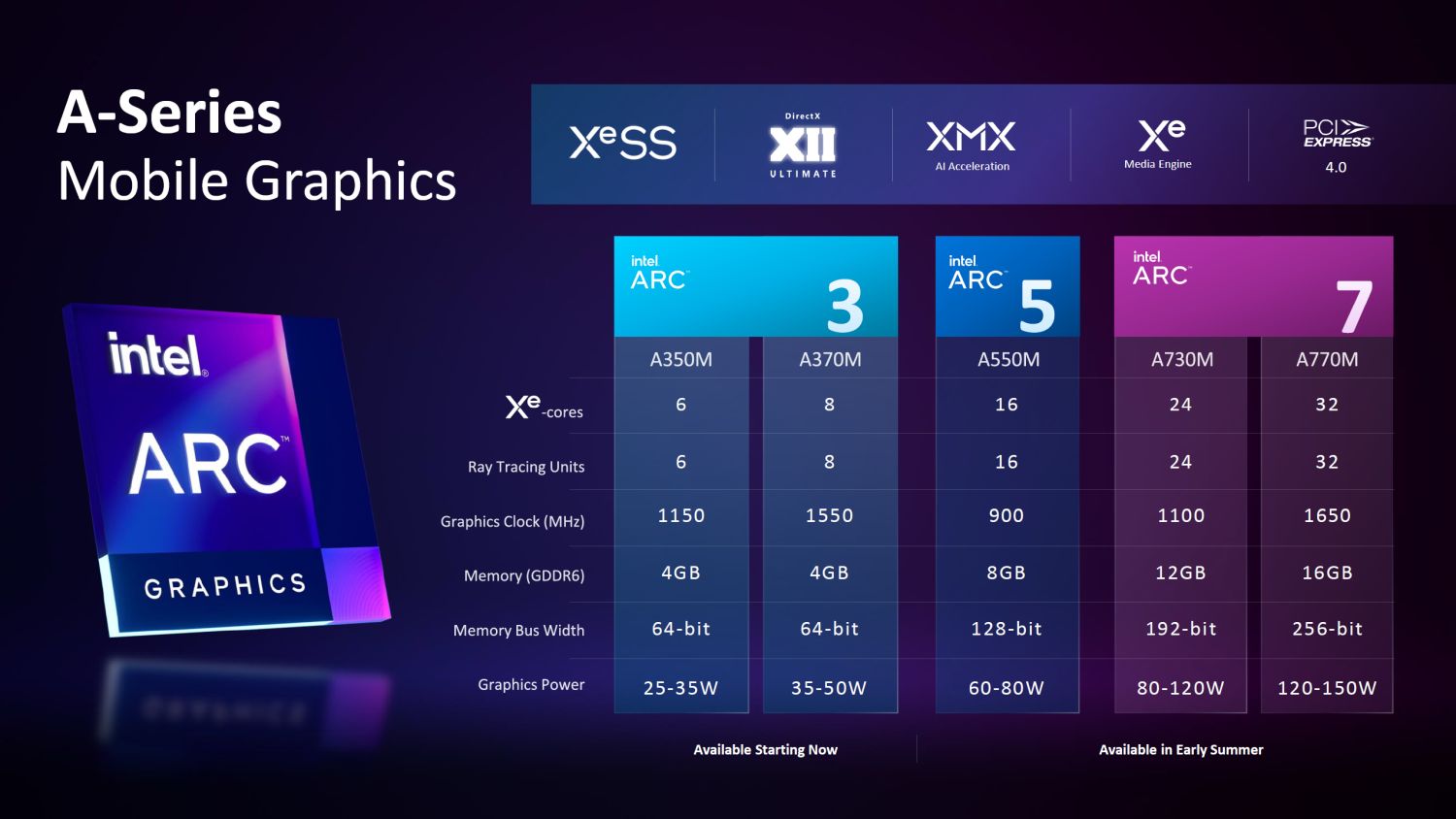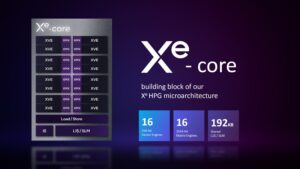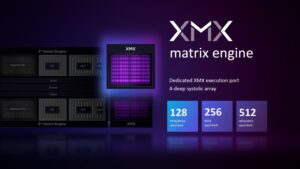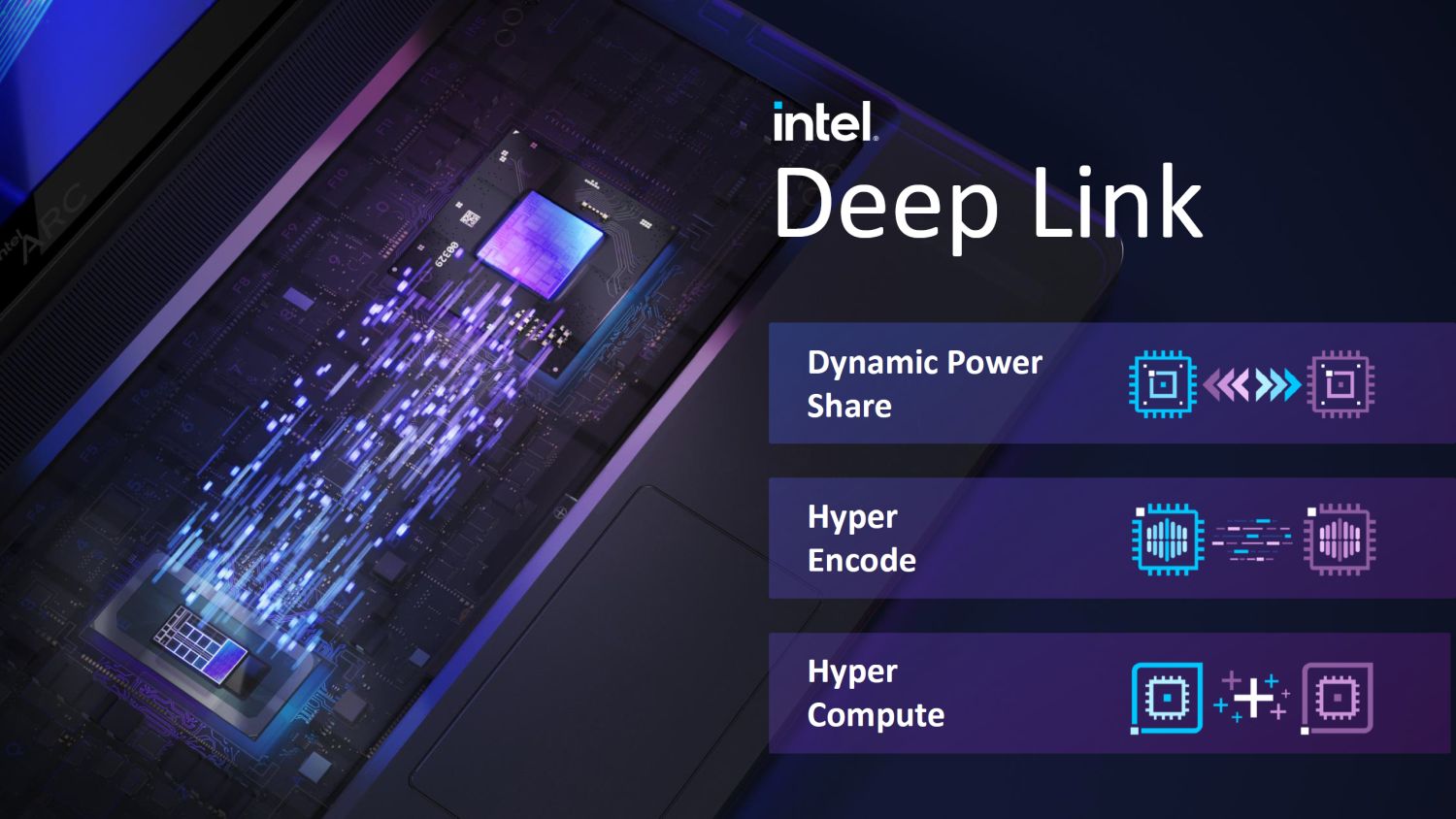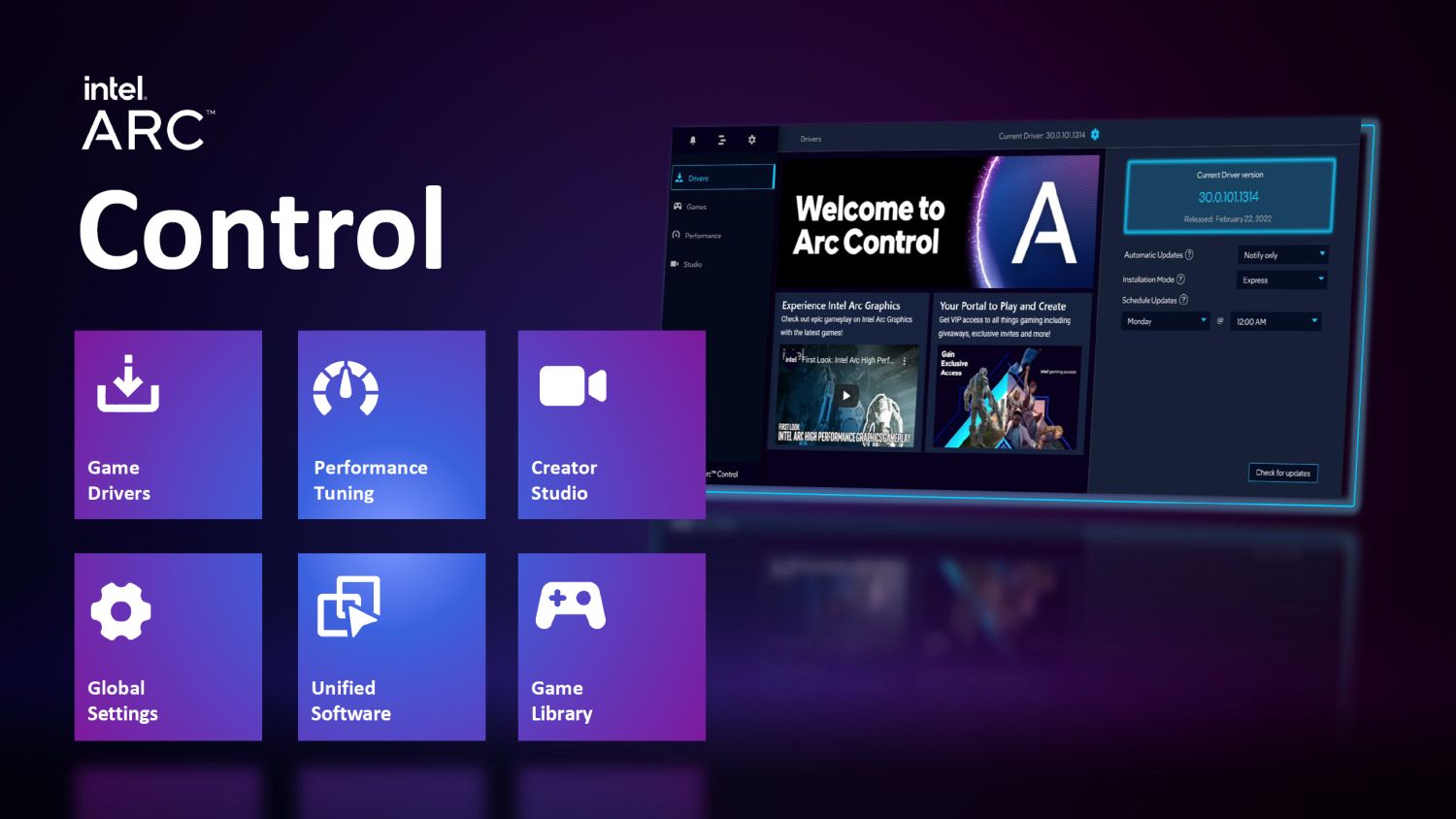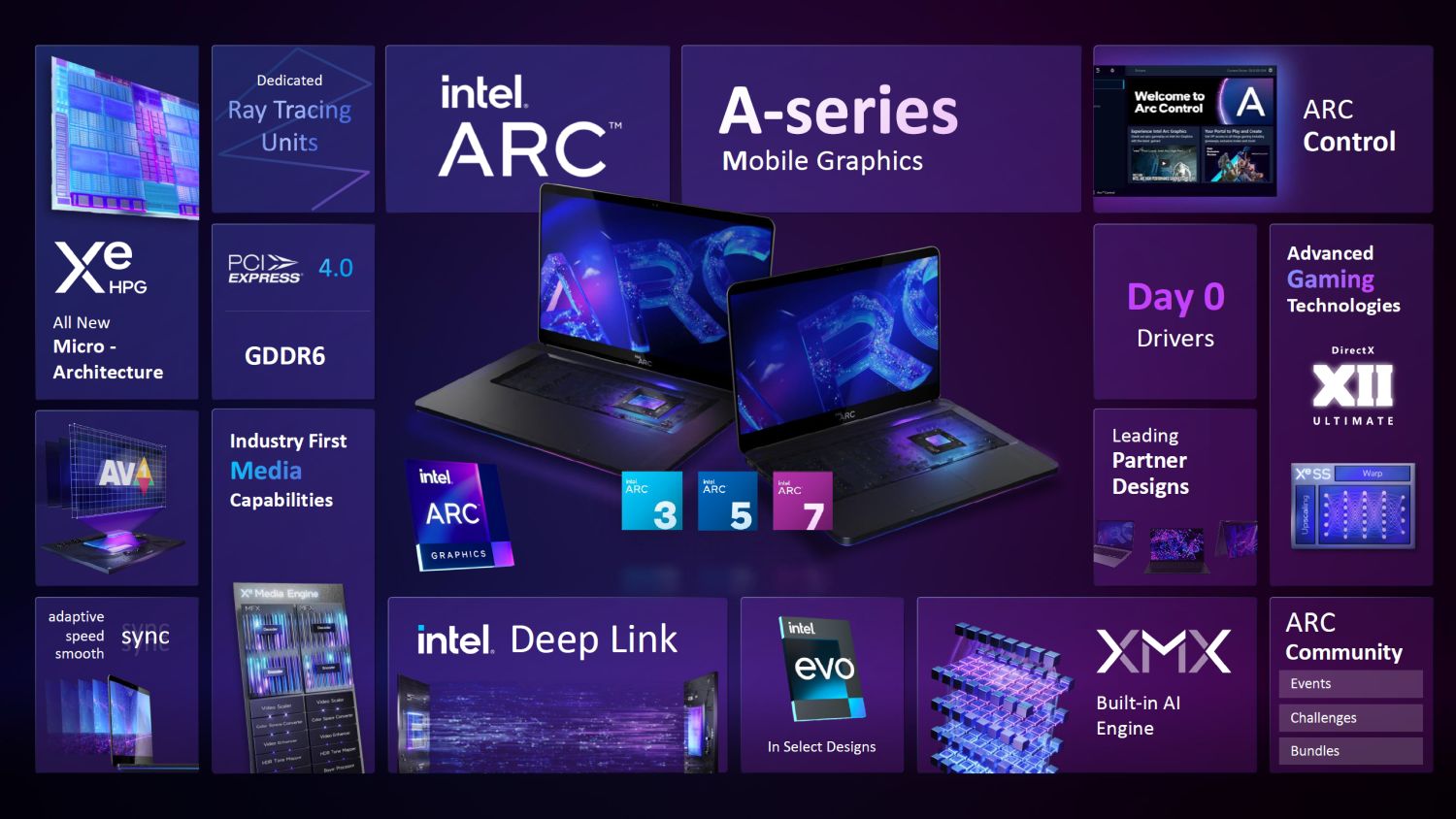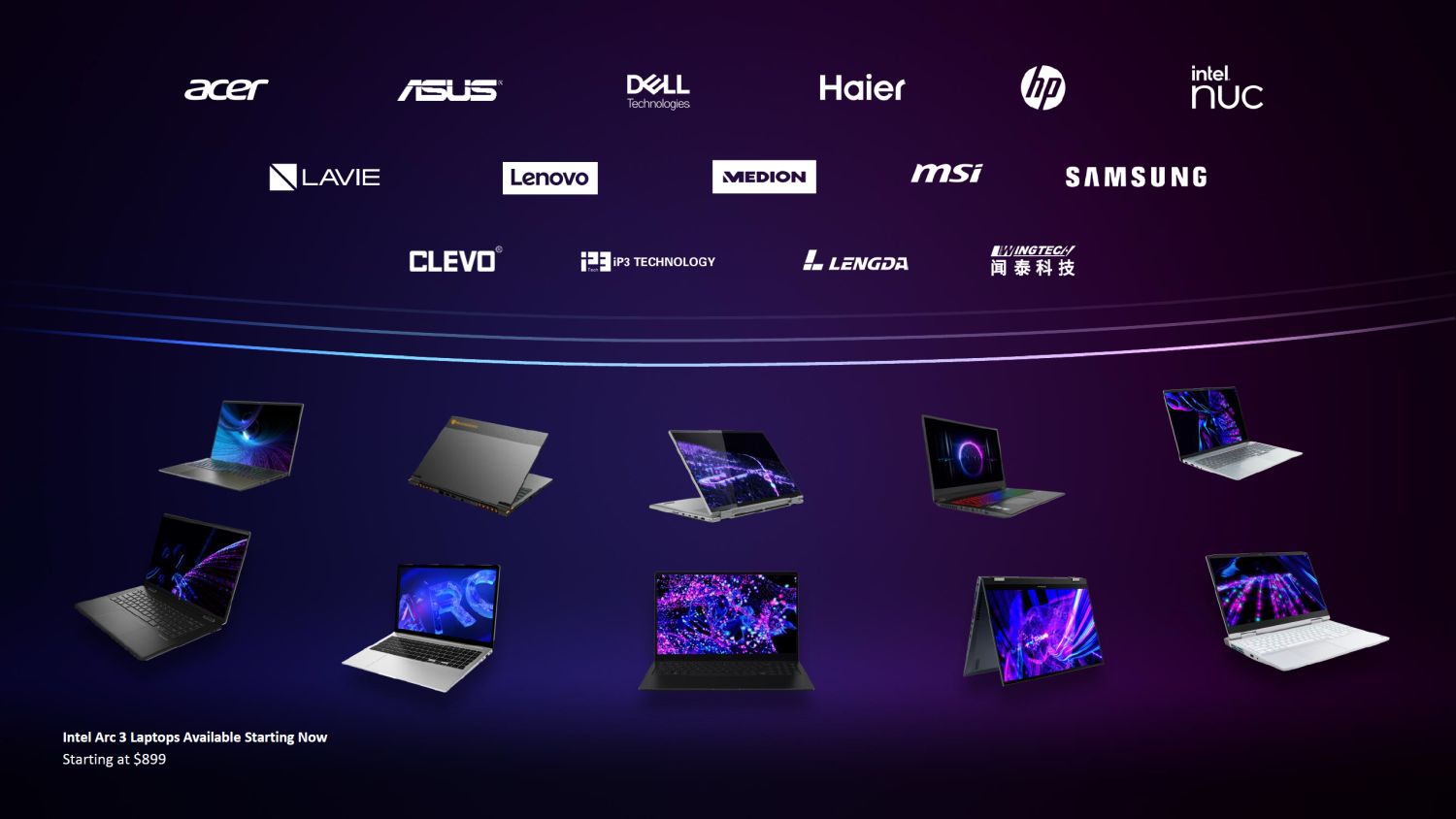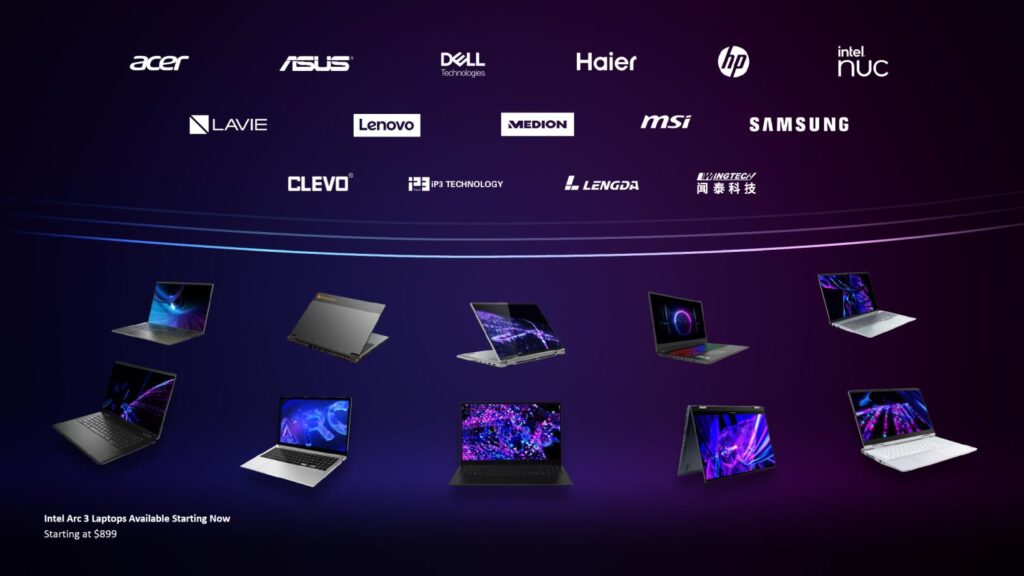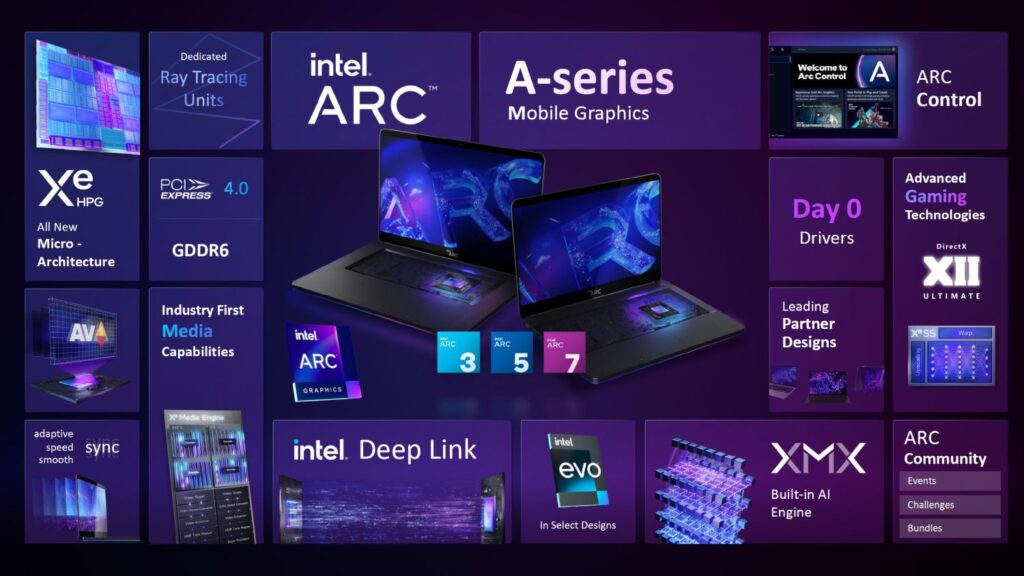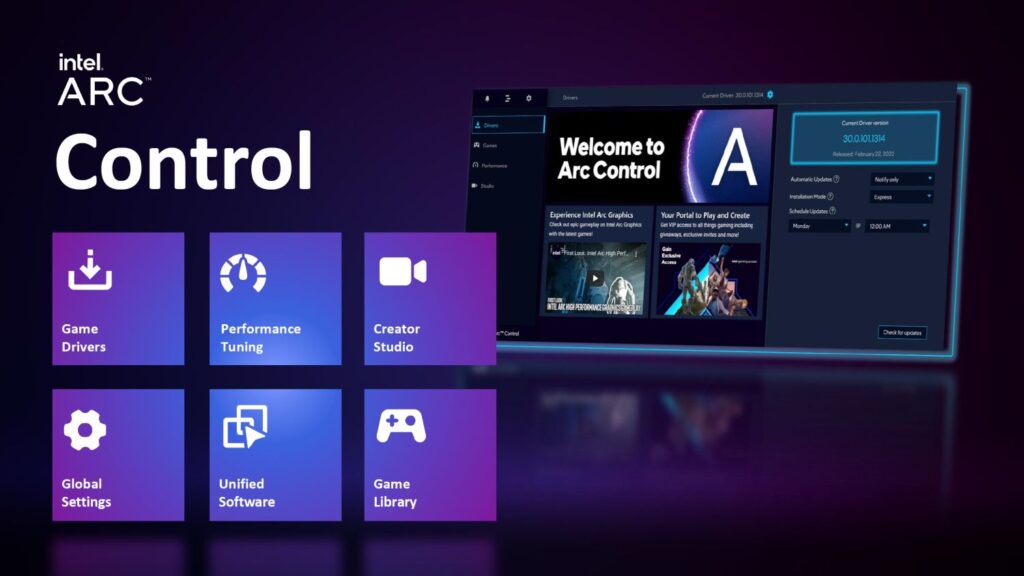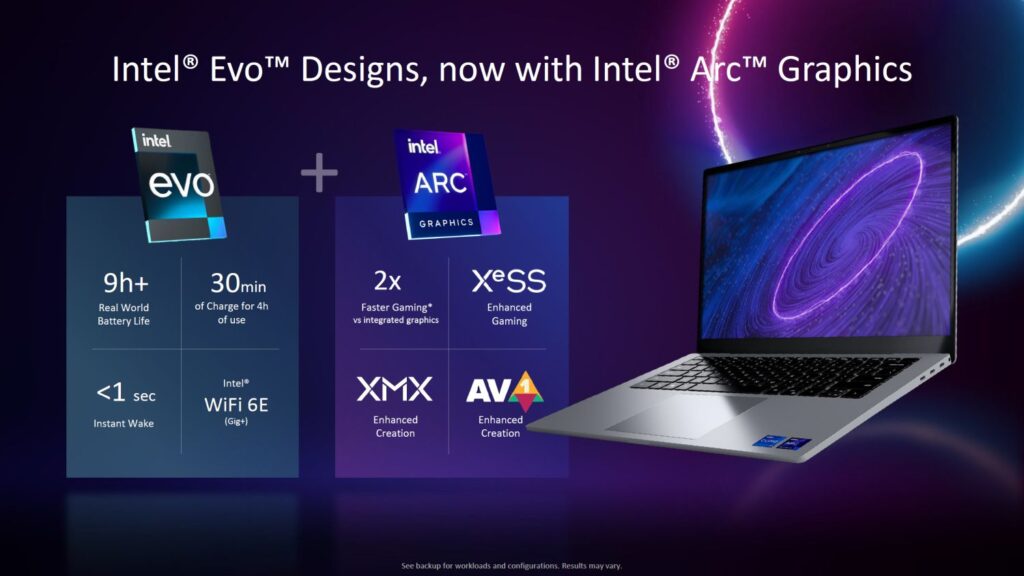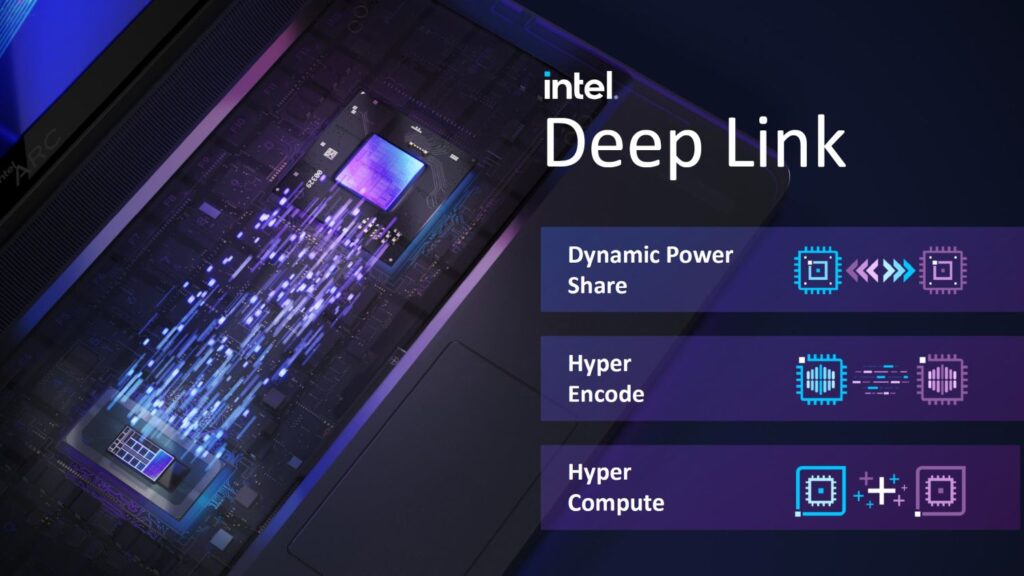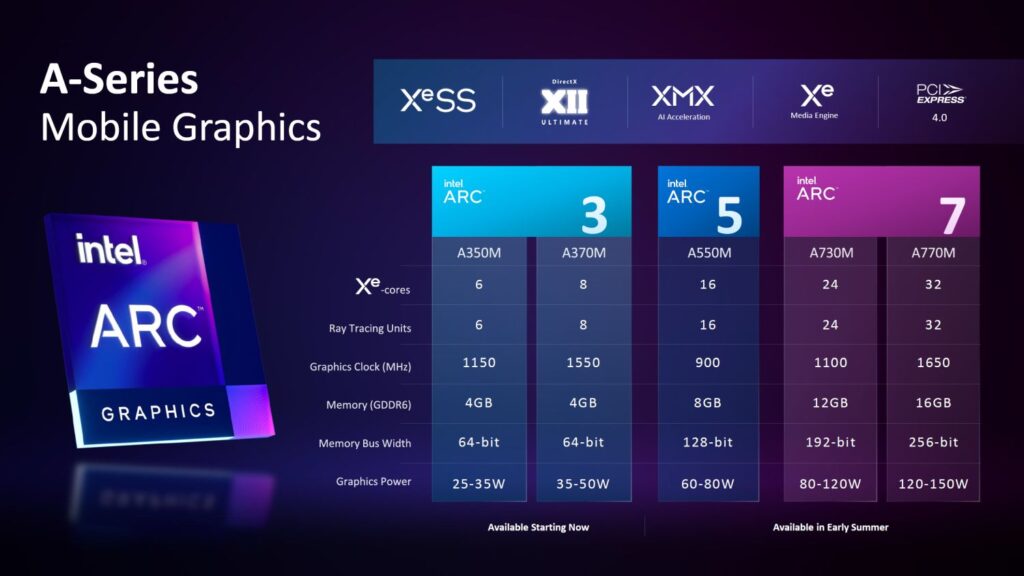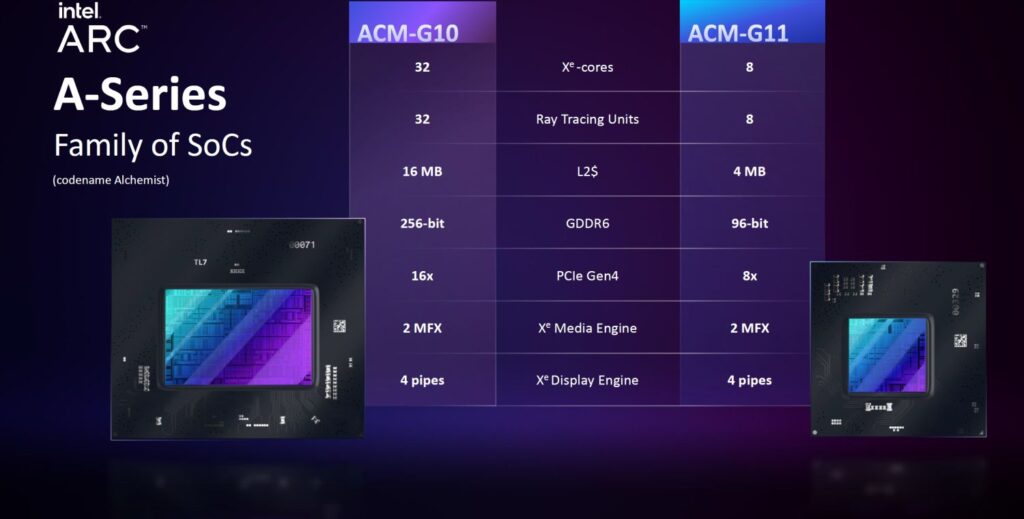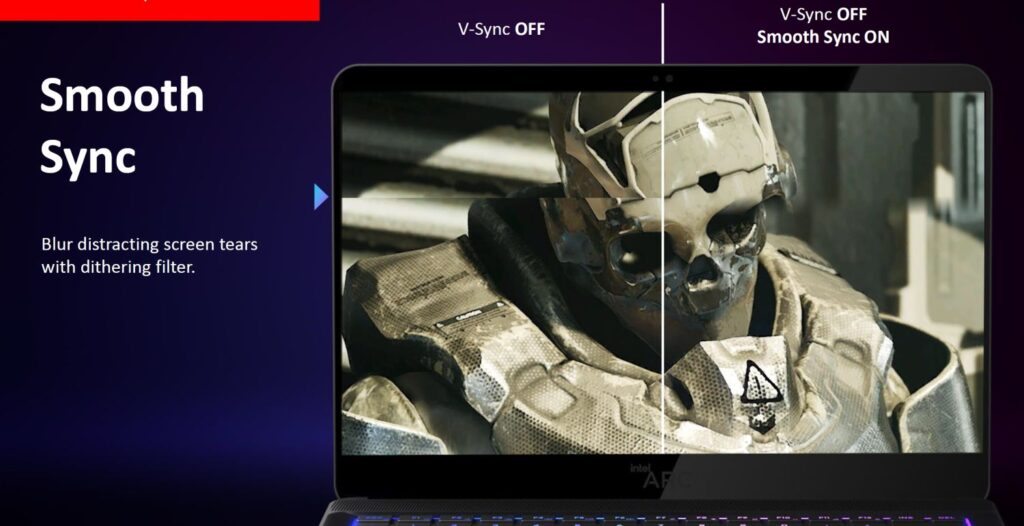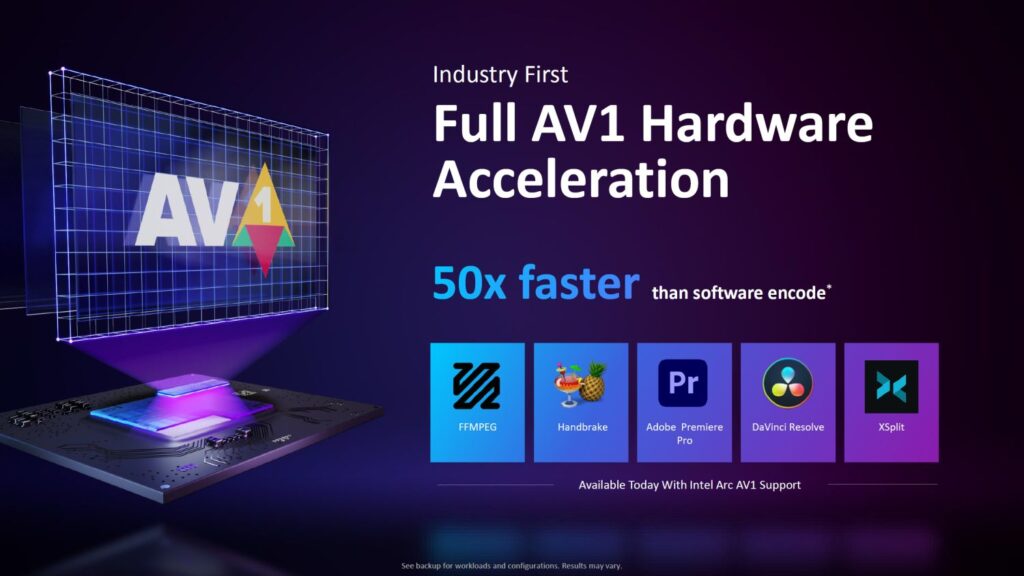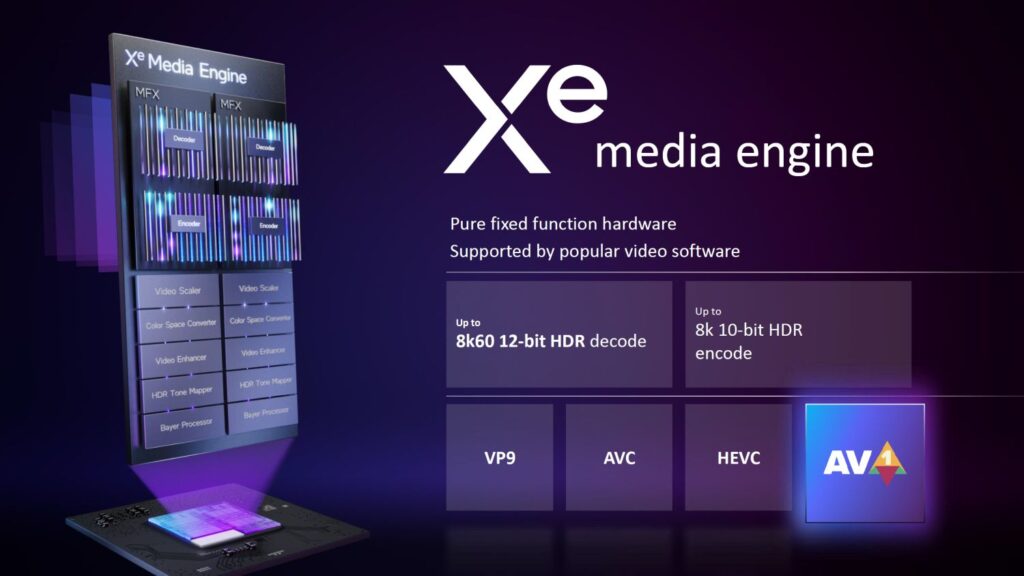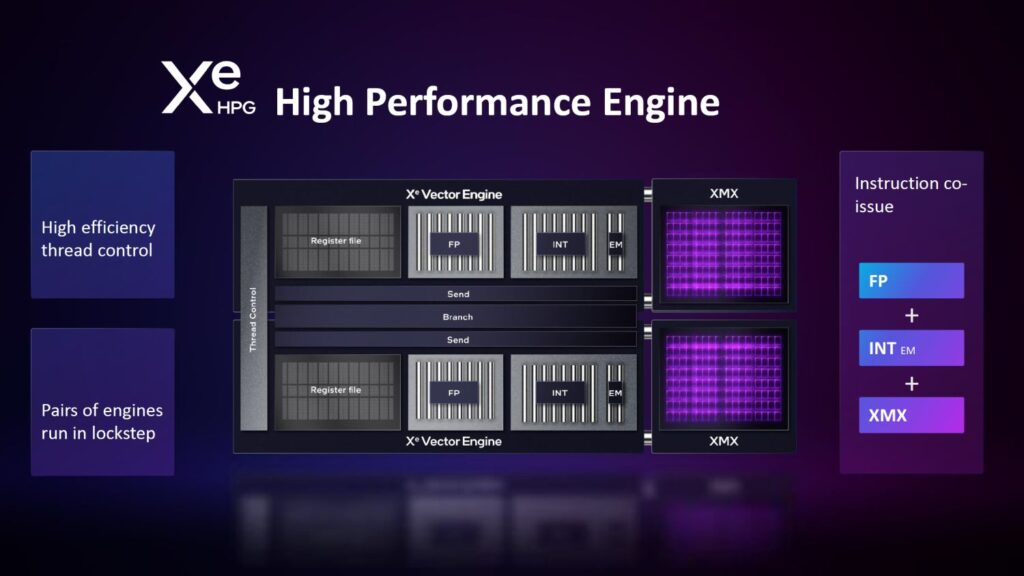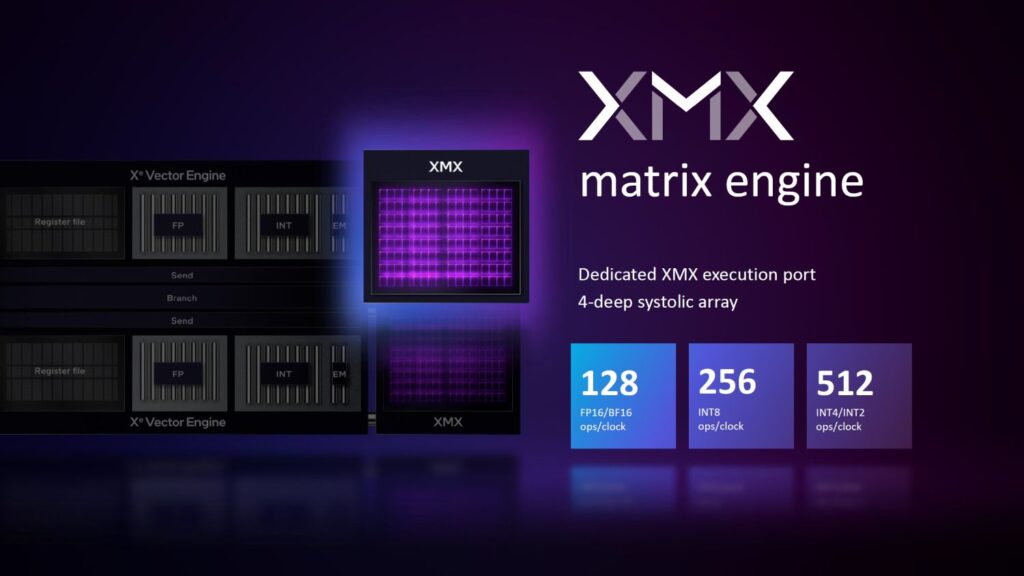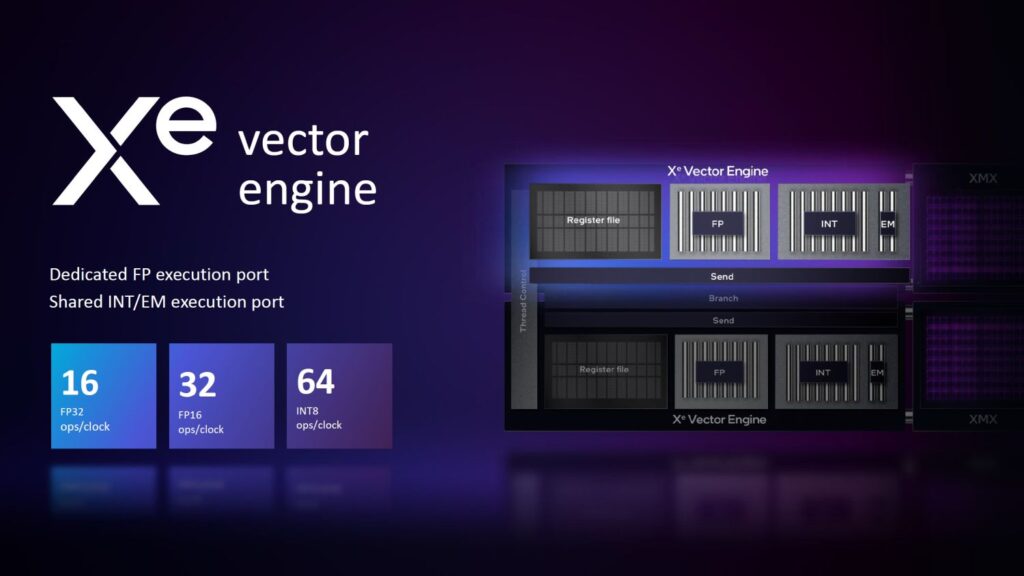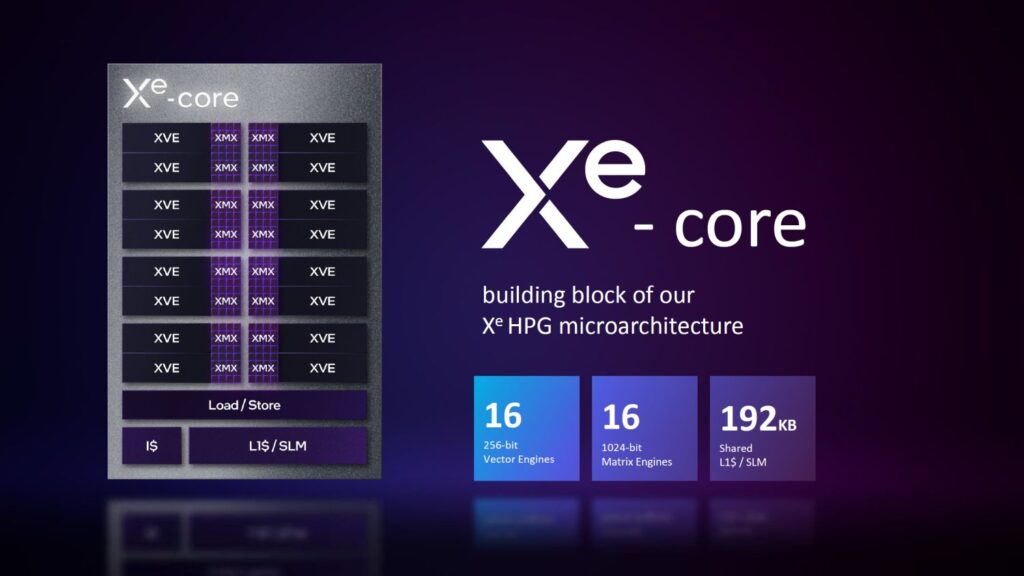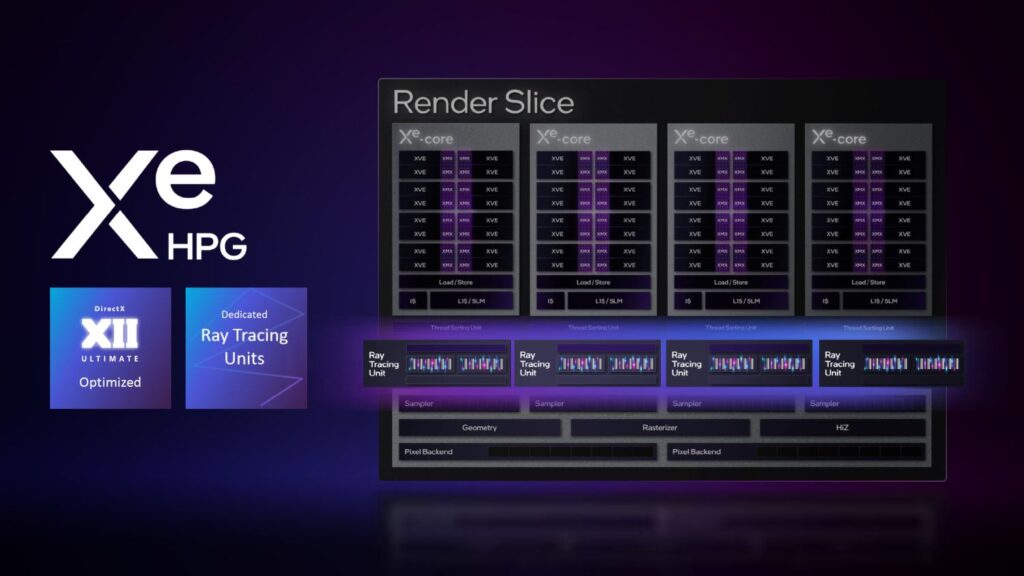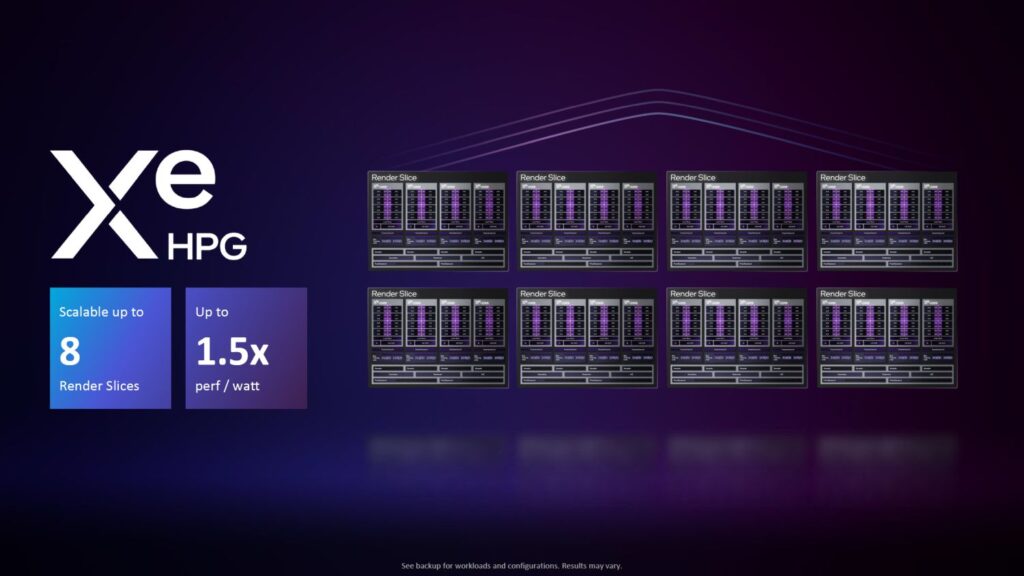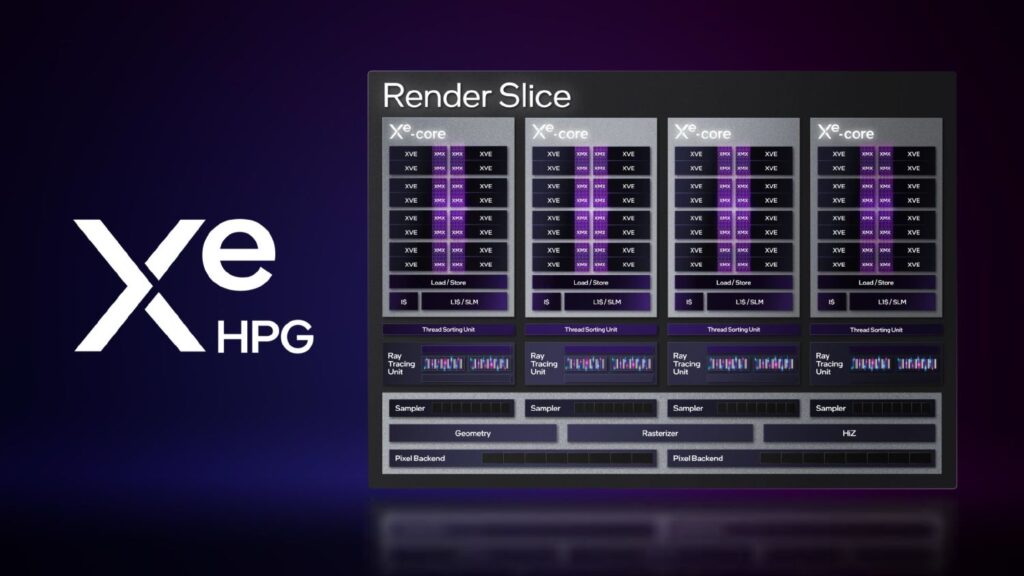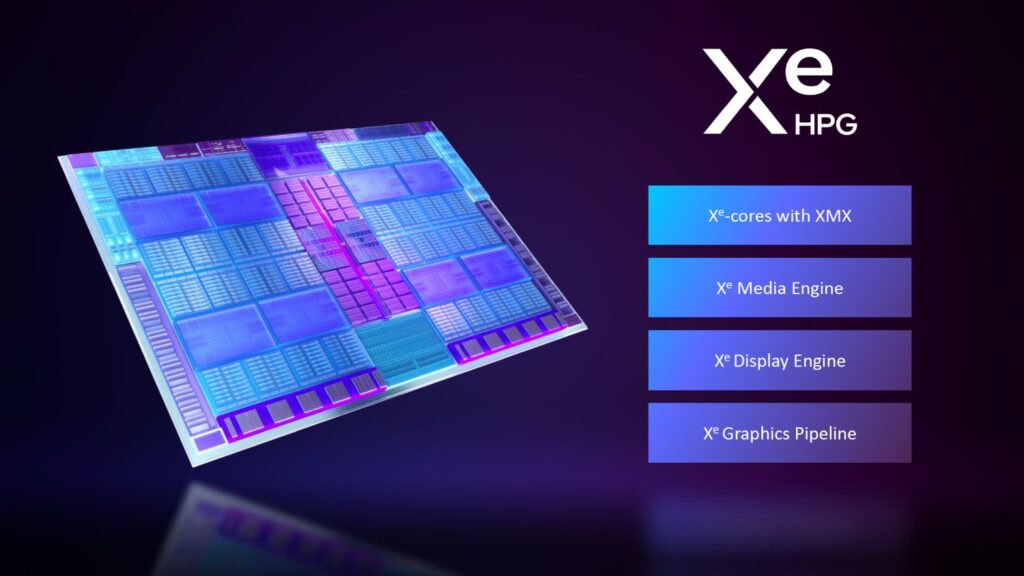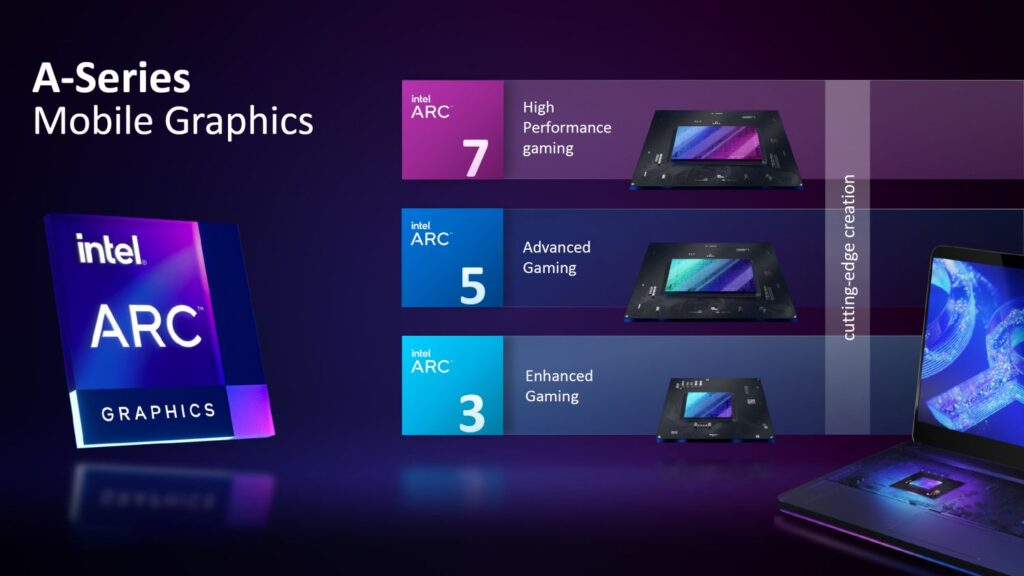Intel’s ARC Alchemist is finally here and with it, the chipmaker is finally able to spill the beans on what consumers can expect from its newly formed GPU division. To start, the new A-Series is split into three tiers: ARC 3, ARC 5, and ARC 7.
Today, Intel is announcing the A-Series: the official name of its ARC lineup, formerly known as Alchemist. In total, the A-Series for mobile is made up of two members, the lower tier ACM-G11 and high-performance ACM-G10.
Now, to kick things off, Intel isn’t going all out just yet and is choosing to open the sluice gate for its A-Series mobile graphics nice and slow. So, instead of launching all SKUs in one lump sum, the first ARC Alchemist lineup it is making available is the ARC 3 lineup which is comprised of two models, the A350M and A370M.
In terms of specs, both mobile GPUs will house 4GB GDDR6 graphics memory, a 64-bit memory bus, and a total of six Xe Cores and eight Ray Tracing (RT) units. Further, both mobile GPUs also have a sub-50W TDP, making them the two most power-efficient GPUs and clearly aimed at the ultra-thin and light notebook segment. The only discerning difference between the two GPUs, in this case, is their graphics clock: the A350M runs at a frequency of 1150MHz, while the A370M is set at 1550MHz.
While it didn’t provide an obscene amount of detail about ARC 5 and ARC 7, Intel’s chart does show what we can expect from the A550M, A730M and A770M mobile graphics when they become more readily available in laptops set to launch in “Early Summer”. Naturally, these GPU will have more Xe Cores, RT units, as well as a higher amount of graphics memory and bigger memory bus. And even greater power consumption.
In this instance, the A550M, which is currently the only SKU in the ARC 5 lineup, is set to ship out with 16 Xe Cores and RT Units, double the memory bus speeds and amount of graphics memory of the ARC 3 GPUs, but running at a lower graphics clock of 900MHz. As for the ARC 7 Series, the mobile GPUs in the series will have up to 32 Xe Cores and RT Units, up to 16GB GDDR6 graphics memory and 256-bit memory bus, as well as up to 1650MHz in graphics clock speeds.
Since the announcement of Alchemist last year, there have obviously been some updates and improvements to its Xe GPU technology, so we’ll start with a recap. For those of you who have been following Intel up until this point, the heart of ARC Alchemist is the Xe-HPG microarchitecture, which itself is made up of Xe Cores: the “building block” of said microarchitecture.
On that note, the Xe-Core itself is a combination of several other elements. This includes a Xe Vector Engine, whose dedicated tasks include FP and Shared INT/EM execution ports, as well as multiple dedicated XMX Matrix Engine.
That said, ARC Alchemist still has access to other features that were announced last year, when the lineup made its debut. As all ARC GPUs feature Ray Tracing (RT) cores, they are able to take advantage of Xe Super Sampling or XeSS for short, Intel’s own AI-upscaling technology that is similar to NVIDIA’s DLSS or AMD’s FidelityFX Super Resolution (FSR).
Moving on, there’s also the Xe Media Engine, which is responsible for video encoding and decoding. Specifically, Intel says that it is capable of decoding 12-bit HDR videos at resolutions of 8K60Hz, as well as encoding 10-bit HDR videos at resolutions of 8K.
That’s not all there is to the Xe Media Engine either. To make the media engine unique, Intel collaborated with the Alliance for Open Media, in order to create a brand new AV1 Hardware Accelerator that the chipmaker says is 50 times faster than the conventional software encoding technology. To put it in another way, AV1 is an alternative to gamers and streamers that works seamlessly with Intel’s Xe architecture.
Another new display feature Intel is introducing is an anti-screen-tearing technology called Smooth Sync. To put it simply, Smooth Sync is designed to “blur the lines” between low-power and high impact gaming, by harnessing the power of AI to smoothen out tears on the display with a filter.
Oh and before you ask: yes, ARC does support DirectX 12 Ultimate. Honestly, it would be a bit of a pointless exercise if it didn’t, seeing how the API is obviously needed in order to execute actions and in-game directives related to ray-tracing.
Then there is Deep Link, a technology that was briefly mentioned earlier in the year during Intel’s CES presentation but failed to provide any further specifics. To put it in laymen’s terms, Deep Link is a technology that allows ARC SoCs to work together with the integrated GPU cores of an Intel processor, based on the workloads being handled at the time. Mind you, this feature will only be available in laptops using 12th generation Core series CPUs and ARC GPUs.
Lastly, Intel is also releasing a new monitoring tool known as ARC Control. As you can imagine, the software suite works more or less the same way as NVIDIA’s GeForce Experience and AMD’s own Radeon Software Adrenalin Edition does; through Control, users will be able to schedule driver updates for the GPU, or even disable the auto-downloading function altogether and have it notify the user when an update is available. More importantly, the software will be free to download and will not be tied down a physical hardware requirement or even subscription to the service.
As for availability, Intel says that its ARC 3 GPUs will be available in Evo Design laptops, starting today and at a starting price of US$899 (~RM3780). One of the first notebooks that will be based entirely on Intel’s entire CPU and GPU architecture is the Samsung Galaxy Book2 Pro, but it goes without saying other brands will soon be announcing their own Intel Evo Design laptops with ARC soon.
Follow us on Instagram, Facebook, Twitter or Telegram for more updates and breaking news.



